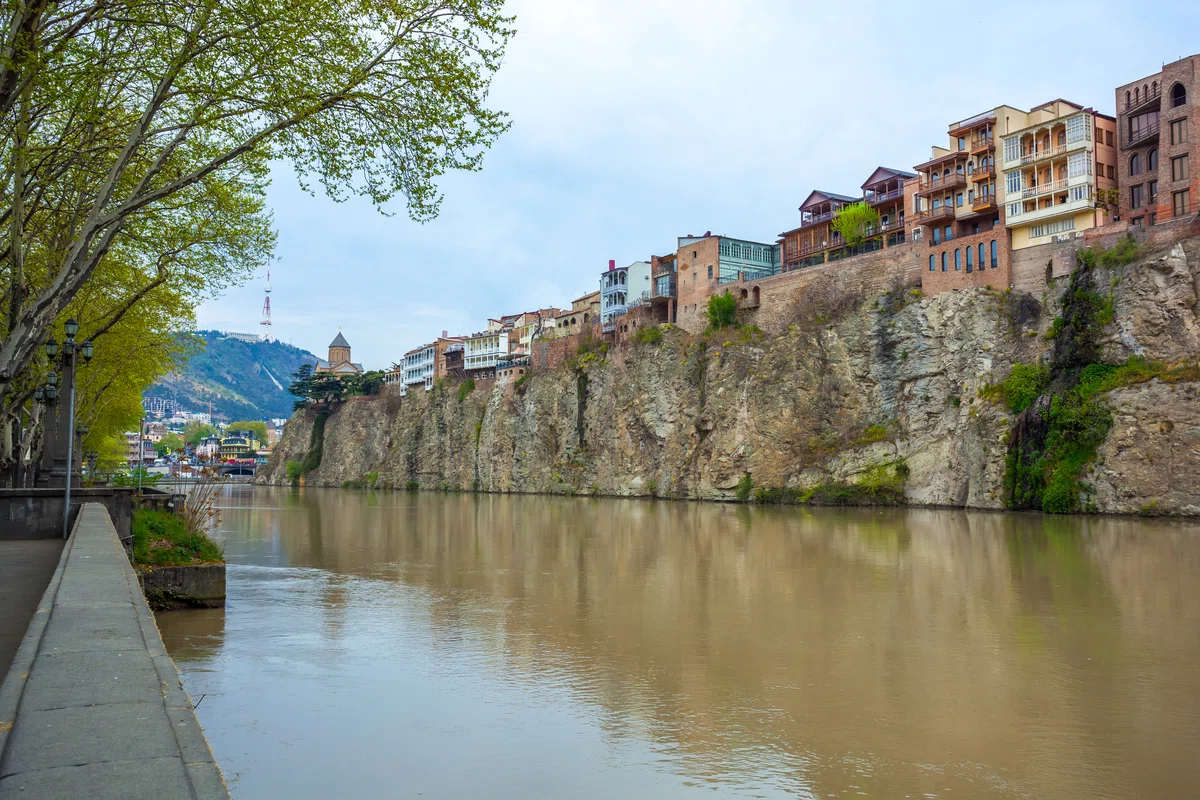
Tbilisi is a place where the past is successfully intertwined with the present: the old quarters and historical districts of the capital of Georgia.
The main charm of Tbilisi, Georgia! In the article you will find the best places to visit and all the nuances that you can meet on the way. The local ancient fortresses and majestic monuments come to see at any time of the year, as they amaze everyone and always.
Visit the historical districts of Tbilisi⬇️
Tbilisi is one of the oldest cities in the world. It has gone through a difficult path, destroyed many times by the conquerors. But it was restored, changed over the centuries. The charm of the city determines the flavor of the old districts. The peculiar streets with carved overhanging balconies, spiral staircases and open courtyards are all old Tbilisi.
The city is developing and being built. Modern architects are trying to fit new buildings into the surrounding reality in such a way as not to destroy the charm of the ancient city of Tbilisi. Here the past is successfully intertwined with the present.
Old district - Abanotubani
Tbilisi means "warm spring" in translation. According to an old legend, the king of Iberia Vakhtang Gorgasali hunted in the forests on the site of present-day Tbilisi. A pheasant shot by the king fell into a spring and boiled.
The tsar liked the place and the springs, and Vakhtang ordered to found a city here (5th century). Later, baths were built on sulfur springs, and this area was called Abanotubani or Bathhouse.
Baths were built in the Persian style, these motifs were also manifested in the interior decoration. Almost all the rooms of the baths are underground, the buildings are crowned with semicircular roofs.
The old quarter of Tbilisi is very attractive for tourists and locals. First of all, a large number of sulfur baths. Like the Roman baths, the baths were not just used for their intended purpose, but were a place of friendly and business meetings, a club of interests. This tradition is partially maintained today.
These baths were visited by famous people who visited Tbilisi, for example, A.S. Pushkin, A. Dumas-father and others. A plaque with the words of Alexander Sergeevich is fixed on the wall of one of the baths:«I have never met... anything more luxurious than the Tiflis baths."
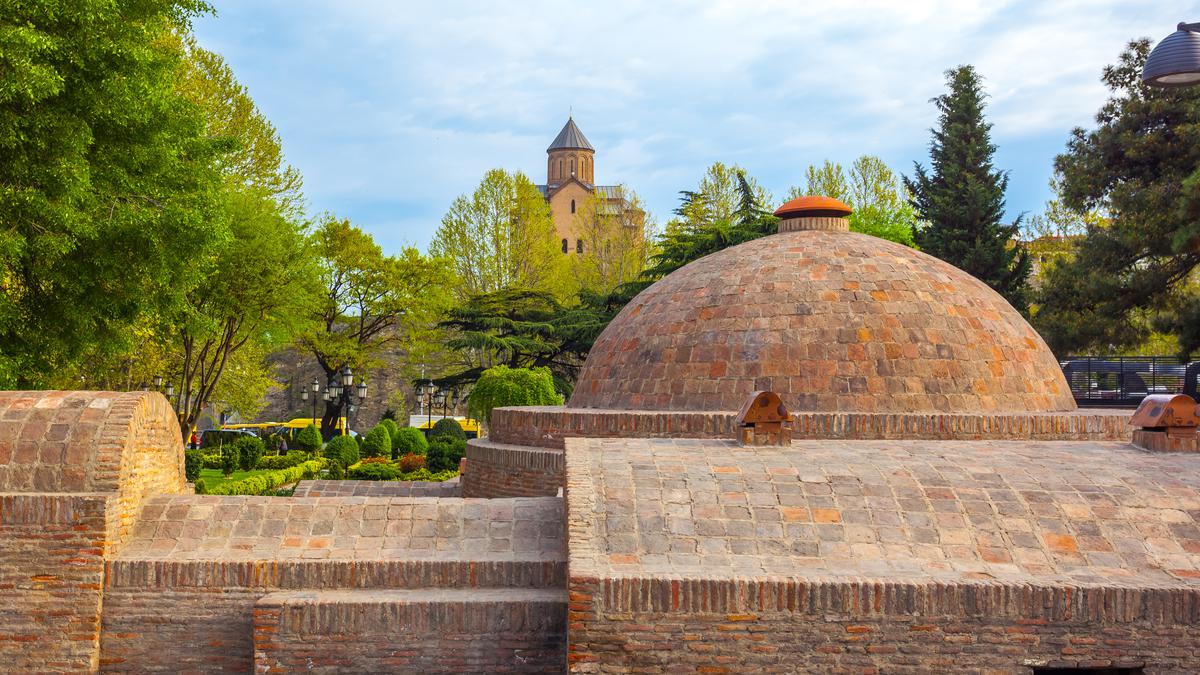
Avlabar and Metekhi Temple
Walking along the embankment from the baths area to the Metekh Bridge, on the opposite bank of the Kura we will see a monument to the founder of the city, Vakhtang Gorgasali. And a little higher –Metekhi Temple.
Here begins another historical district of the city – Avlabar, where people of different nationalities and faiths have lived peacefully since ancient times.
The Georgian people adopted Christianity in the 4th century. Since then, churches have been built and sacredly guarded. Many temples are the same age as the city. For example, the Metekhi Temple is a symbol of Tbilisi and its business card.
The temple was built together with the city, in the 5th century. Nearby was the royal palace. Unfortunately, time and war did not spare the temple, it was destroyed. What we see today dates back to the 13th century.

From the observation deck near the temple, breathtaking views of the Old City, its narrow streets with old houses, shops and cafes open.
Right opposite is the popular tourist cafe "Samikitno" ("I love Tbilisi").
A little to the right, the pedestrian bridge of the World "hangs" over the Kura – a steel structure covered with glass.
On the left, St. George's Church and the walls of the Narikala fortress are visible. Well, further and higher than all the buildings is Mtatsminda Mountain with a Ferris wheel and a TV tower.
Multi-colored lighting allows you to admire the Old City even at night.
In addition to the Metekhi Temple and the sculpture of Vakhtang Gorgasali , there are:
- Rike Park, here is the lower station of the cable car to the Narikala fortress;
- Presidential Palace;
- Holy Trinity Cathedral (cathedral);
- dilapidated Church of the Red Gospel (ruins of the great Armenian cathedral of Avetaran).
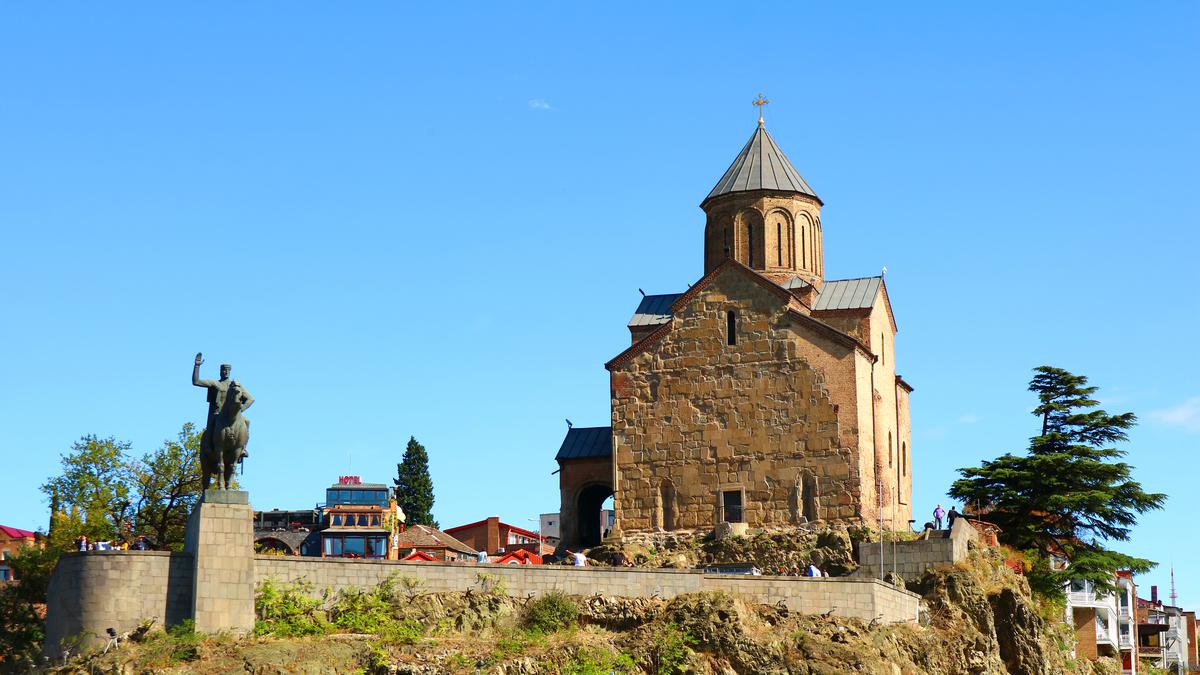
Narikala Fortress
It is not known exactly when the stone fortress was built. But the fort on the hill existed back in the 4th century. At that time, the fortress was called Shuris Tsikhe or Enviable Fortress. It was the most impregnable fortification on the Silk Road.
The name Narikala (Small Fortress) appeared in the 11th-12th centuries, during the Mongol invasion. The fortress walls were adjacent to the city wall and served as protection of the city from invaders. Observation towers were placed around the perimeter of the walls.
Only fragments of the fortress walls have been preserved. They seem to grow out of the hillsides between the Botanical Garden and the sulfur baths.
There are always a lot of tourists who climb to the fortress by cable car from Rike Park. Walkers who are not afraid of steep climbs go to the fortress on foot.
From the observation deck, the districts of Old Tbilisi and Botanical Garden.

Freedom Square
Freedom Square is located in the center of the city. In its central part stands a column topped with a statue of the patron saint of Georgia, St. George, piercing a snake with a spear.
A large street that practically flows into the square is Rustaveli Avenue. Nearby is the metro station of the same name. The streets of G. Tabidze, A.S. Pushkin, Shalva Dadiani and others also face the square.
There are administrative buildings and large hotels on Freedom Square, so it is always crowded here.
From here, walks around the Old Town begin. There are interesting sights in the surrounding streets. There are also many cozy cafes and restaurants, small shops, squares and monuments – to A. Pushkin, S. Chiaureli, S. Parajanov.
On the Sololak Hill there is a monument to the Mother of Georgia (Kartlis Deda), which is clearly visible from Freedom Square. In one hand, the woman has a cup of wine for friends. And in the other hand is a sword – for those who came with the war.
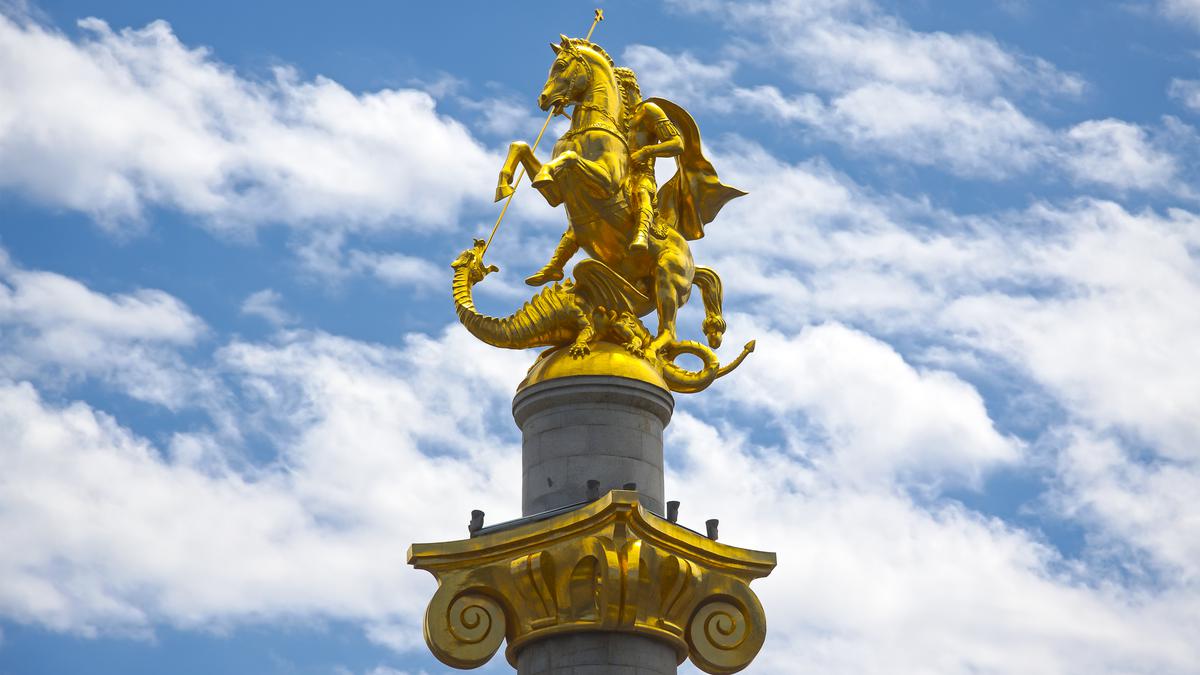
Monument to the Toastmaster
One of the most interesting monuments in Tbilisi, which symbolizes hospitality and traditions national Georgian feast,– monument to the Toastmaster.
This is an enlarged copy of a ceramic figurine found by archaeologists on the territory of Georgia. The find dates back to the 7th century BC, that is, even in those ancient times people raised cups and said toasts, and the toastmaster was always an important person at the festival. The artifact is kept in the Georgian National Museum.
There is a monument to the Toastmaster at the intersection of the most colorful streets of the Old City, where there are always a lot of tourists: Sioni and Shardeni. It is simply impossible to pass by it.
Nearby there are Cotton and Iron rows (Bambis Riga and Rkinis Riga).
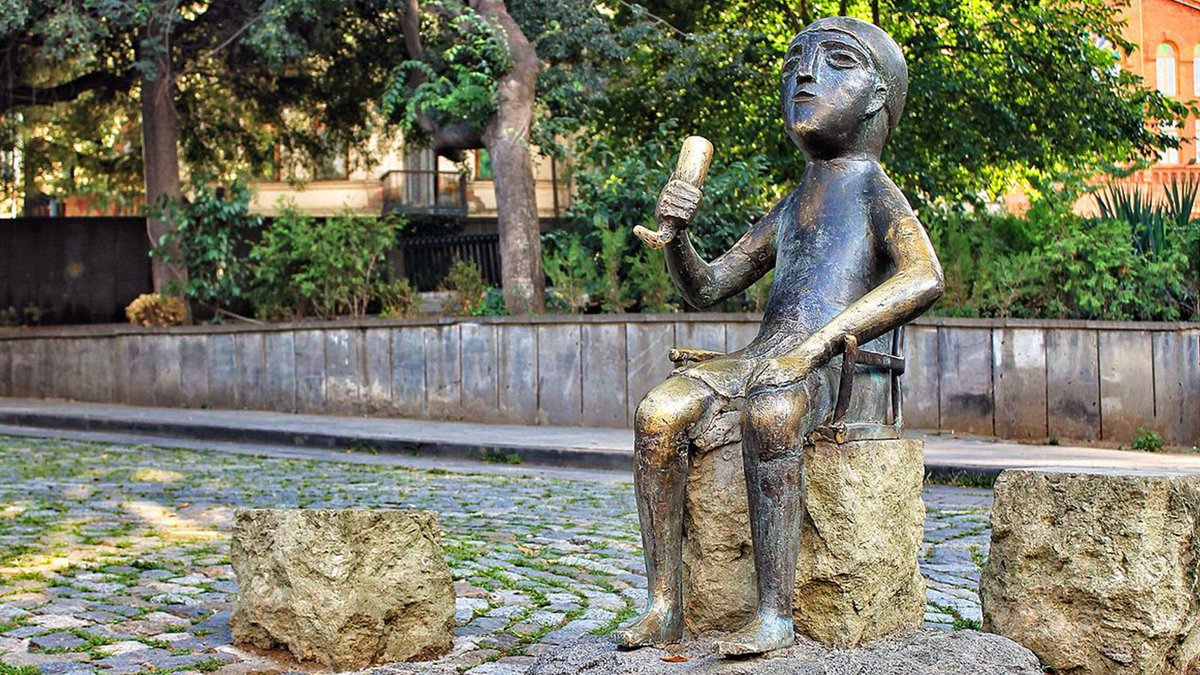
Old Tbilisi is a box, all the wonders of which need to be considered gradually. You should get to know him thoroughly, slowly, or live in an old hotel or a house with carved balconies.
There is a special charm in Tbilisi,
There are sisters in it – both today and before
Under the whisper of "Indie, mindy, perad shindi"
Sheds tears for eternity in a bowl on Mtatsminda.
E. Yevtushenko
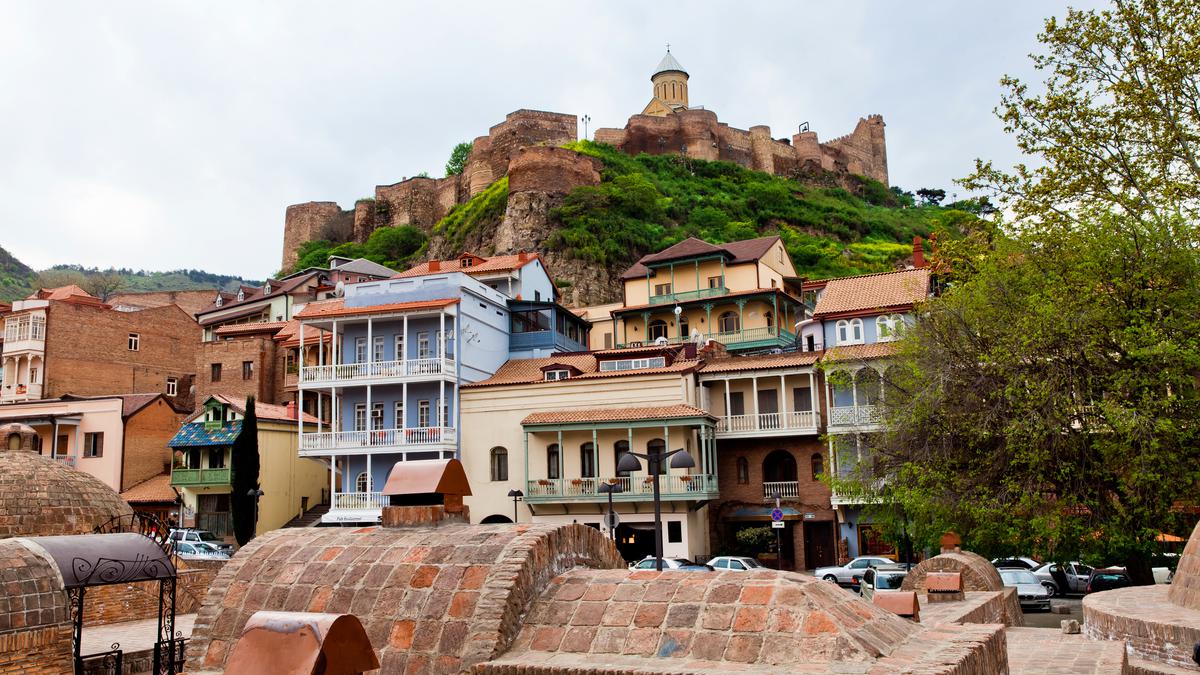












31 comments
Log in to leave a comment